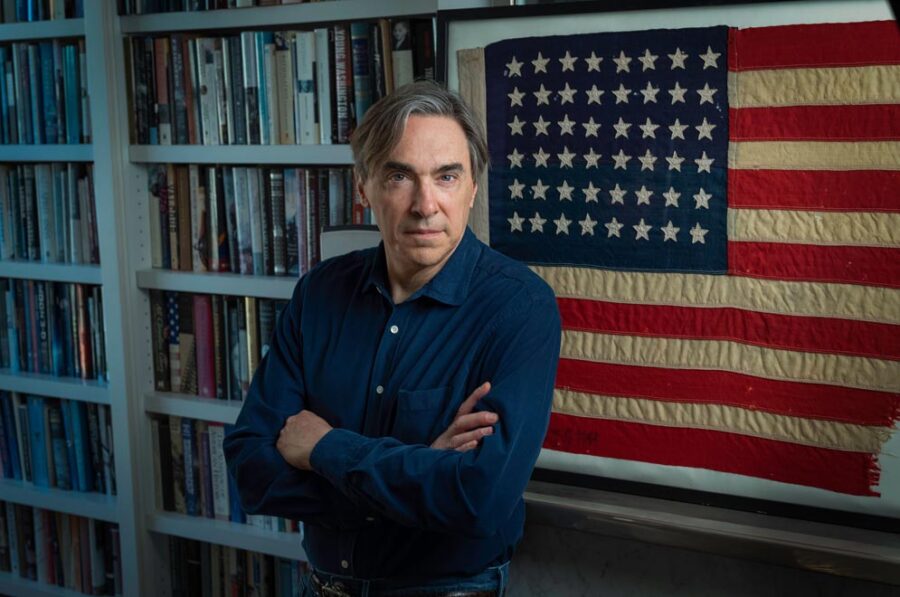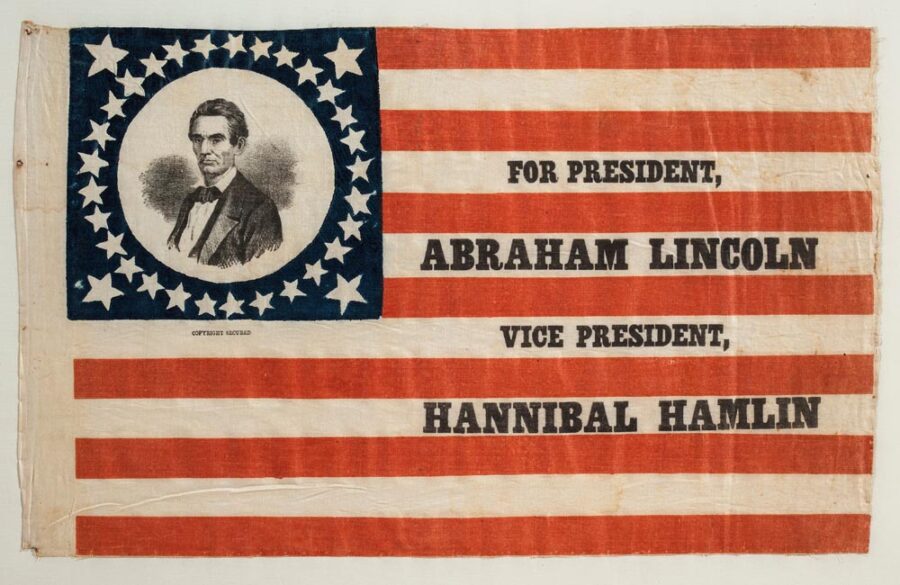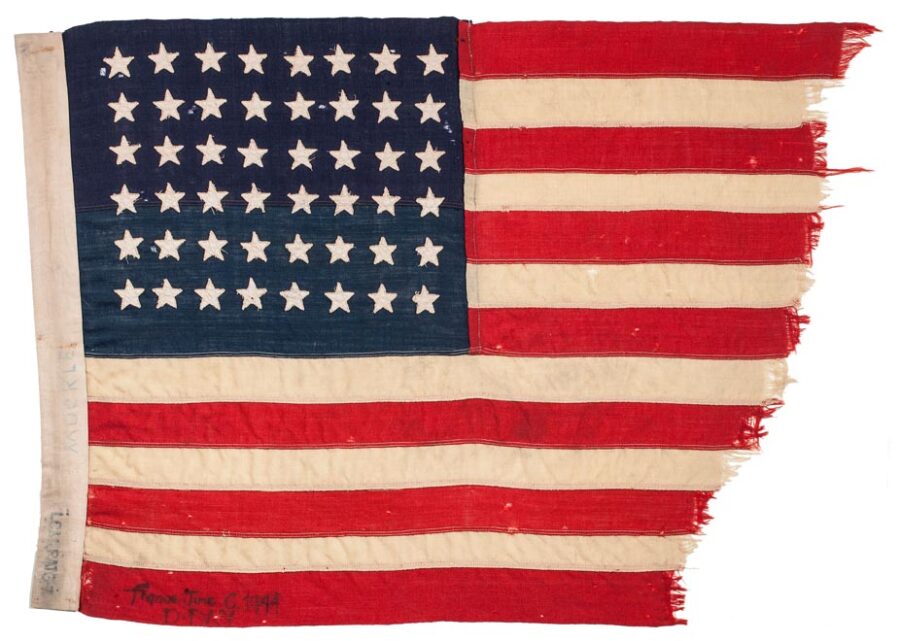
Southampton Arts Center (SAC) is proud to announce Independency: The American Flag at 250 Years, a powerful and visually striking collection of American flags and historic textiles, witnesses to watershed moments in American history, alongside the work of abstract painter Sean Scully.
The exhibition is curated by historian and writer John Monsky with SAC’s Executive Director Christina Mossaides Strassfield. Independency will be on view from May 17, 2025, through July 19, 2025.
Monsky’s flags, represent a lifelong collection that began in his boyhood, and has since served as the focal point of his series of live multi-media musical journeys through history, which he presents at Carnegie Hall and the nation’s top performance venues. His “The Eyes of the World: From D-Day to VE Day,” performed with the Boston Pops from Boston’s Symphony Hall, is currently streaming on PBS.org.
The exhibition, combining both visual art and American history, will feature select flags and historic textiles from Monsky’s collection — from a 1775 George Washington kerchief and a flag for the candidacy of “Abram” Lincoln to flags from the Apollo Missions, alongside Scully’s work. Insightful narrative, archival film and photography, material culture and historic documents, will enhance the visitor experience.
The exhibition includes:
Gallery I. An introduction to the role flags have played in our history, the artistry of the stars and stripes, and the use of that geometry in art, with resonant work from renowned abstract artist Sean Scully.

Gallery II. Campaigns, Parades, and Political Expression: An examination of the role flags and kerchiefs have played in politics and civic discourse, including Presidential campaigns of Abraham Lincoln, John Quincy Adams, and Ulysses S. Grant. Work from Scully continues to interact with the geometries of the textiles.
Gallery III. Vietnam and the Moon: A look at flags reflecting one particularly complex moment, including a tattered flag from a Swift Boat, its occupants 20-year-old boys, juxtaposed with a “Love” flag from San Francisco circa 1968. America’s passion for exploration is seen through textiles from the Wright Brothers and Amelia Earhart, as well as flags that went to the surface of the moon.
Gallery IV. Sacrifice: This collection of flags reflects the victory and heartbreak of America’s conflicts. Highlights include a pennant flown by the USS Constitution in the War of 1812, the conflict which gave us The Star-Spangled Banner, the flagcarried by the nearly all-Black 25th Corps, that captured Richmond, Virginia, the capital of the Confederacy, General George Patton’s personal guidon, and flags that landed on the Beaches of Normandy on June 6, 1944. More contemporary flags are from a memorial held for those who died on Flight 93 on 9/11, and one carried by a US Navy Seal in Afghanistan.
Commenting on the exhibition, Monsky said, “These flags reflect our history, tell our story. Flags that were at rallies, battles, celebrations – flags that were present at hope-filled moments and flags that flew during moments of tragedy. It is also important to appreciate the flag as a geometric object. Its creation was an artistic act. The field of stars calls to our dreams, but it can also be seen as a remembrance of those we have lost: the boys on Omaha Beach on D-Day, dreamers like Amelia Earhart, the astronauts who died in their effort to explore space. The stripes can be seen as the oceans that Americans sailed and the fields where they plowed. We look at the flag every day, but rarely do we contemplate its design and the moments its design captures.”

On Sean Scully’s involvement he added, “Sean Scully’s work resonates powerfully with the iconic geometries of the American flag, and we are very pleased he is adding that compelling component to the Gallery. Scully’s famous stripes with squares reflect upon the emotional content in these flags, bringing new perspectives and amplifying their history they help the viewer approach our flag with new eyes, as it was first seen 250 years ago.”
Scully says, “I live by the river Hudson where much of the War of Independence was fought, where George Washington sunk the American ships so that when the British Armada came up the Hudson it crashed into them, so the issue of the formation of America is consistently on our minds since we live where it was played out. Notwithstanding, my work constantly quotes flags and banners and shifting national identities.”
Strassfield says, “Southampton Arts Center is honored to showcase the John Monsky collection. The works in his collection, which have never been seen in their entirety, are of such historical significance that this is a rare opportunity for visitors to see such treasures. The flags, photographs, and ephemera will genuinely make history come alive on our walls.”
She added, “Sean Scully’s work adds another dimension to this exhibition. It makes us examine the historical flags, their shapes, dimensions, and proportions more closely and see how contemporary artists have reused and reinvented those elements in their own work.”












